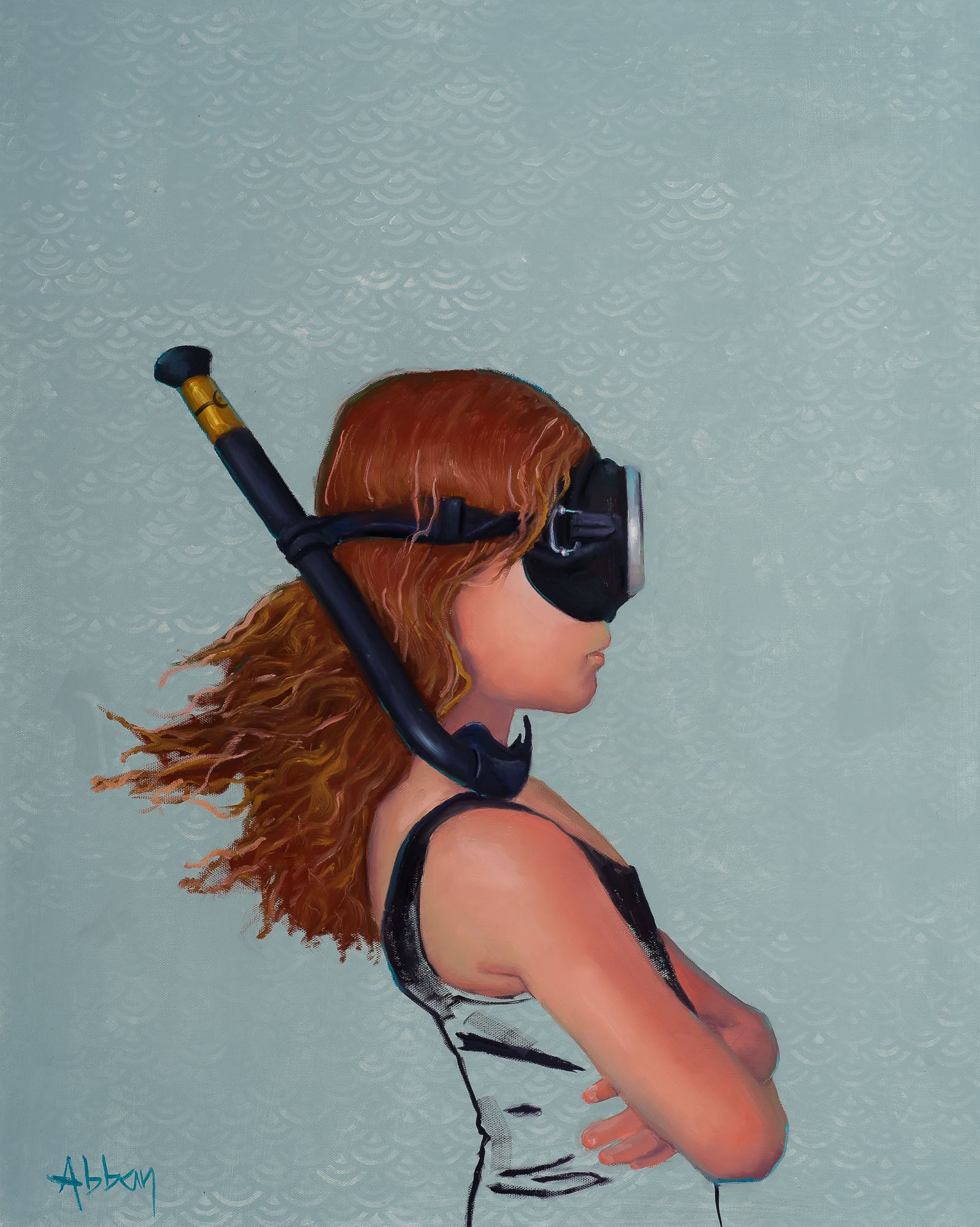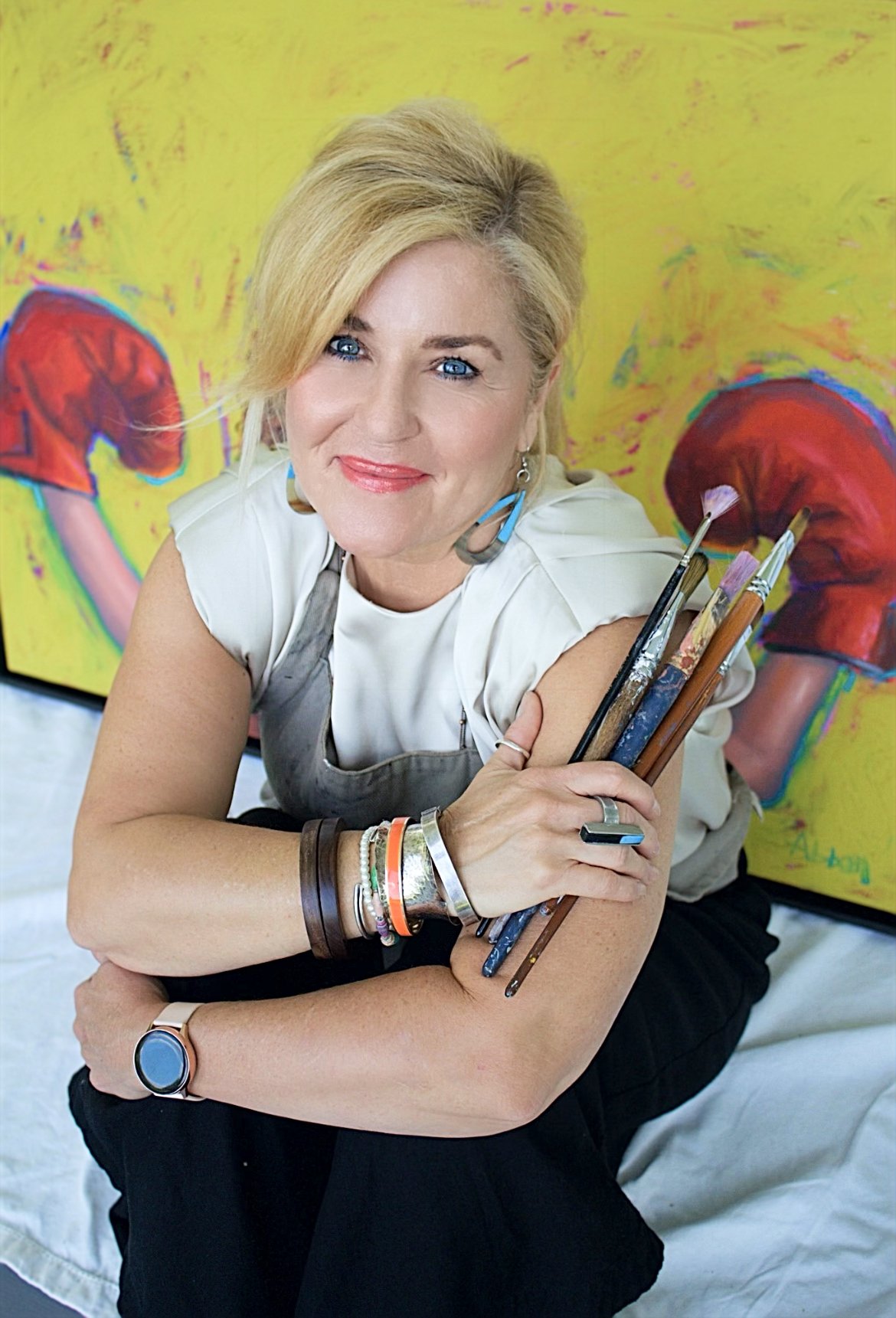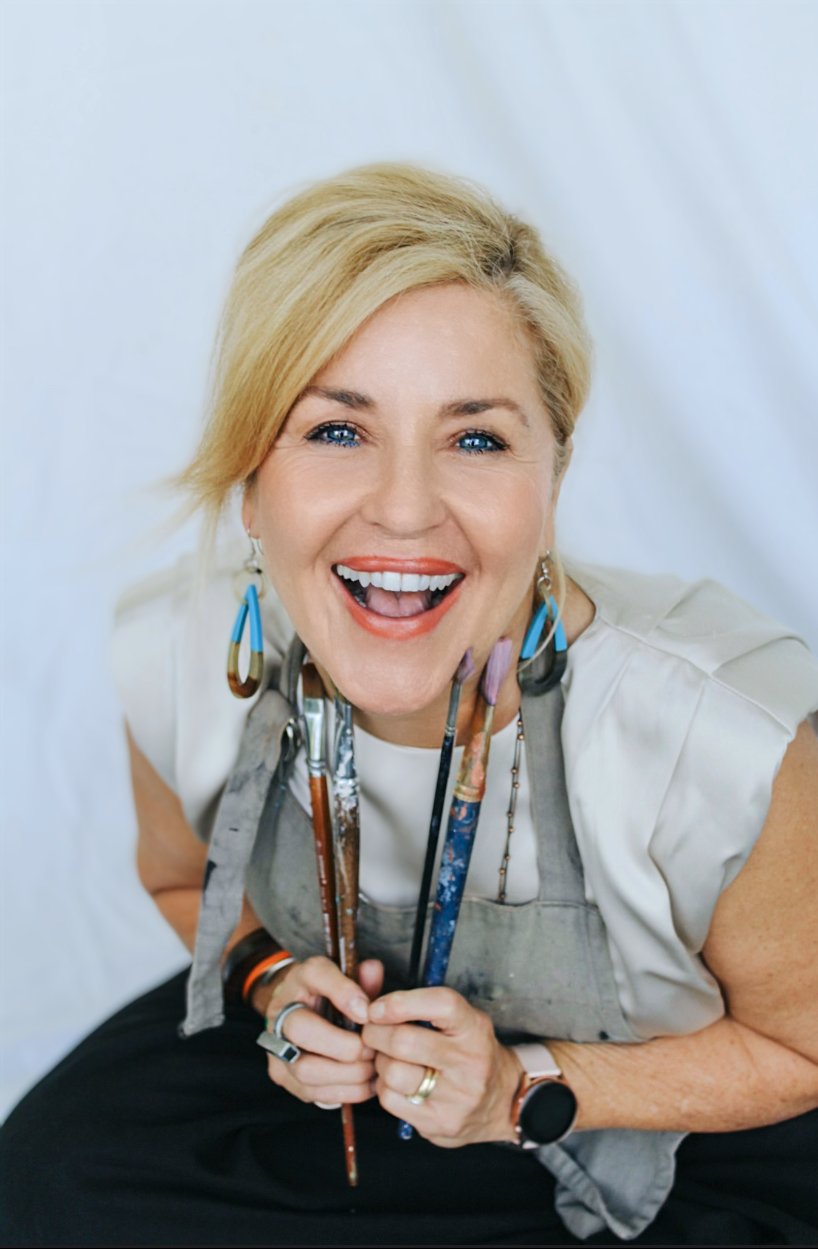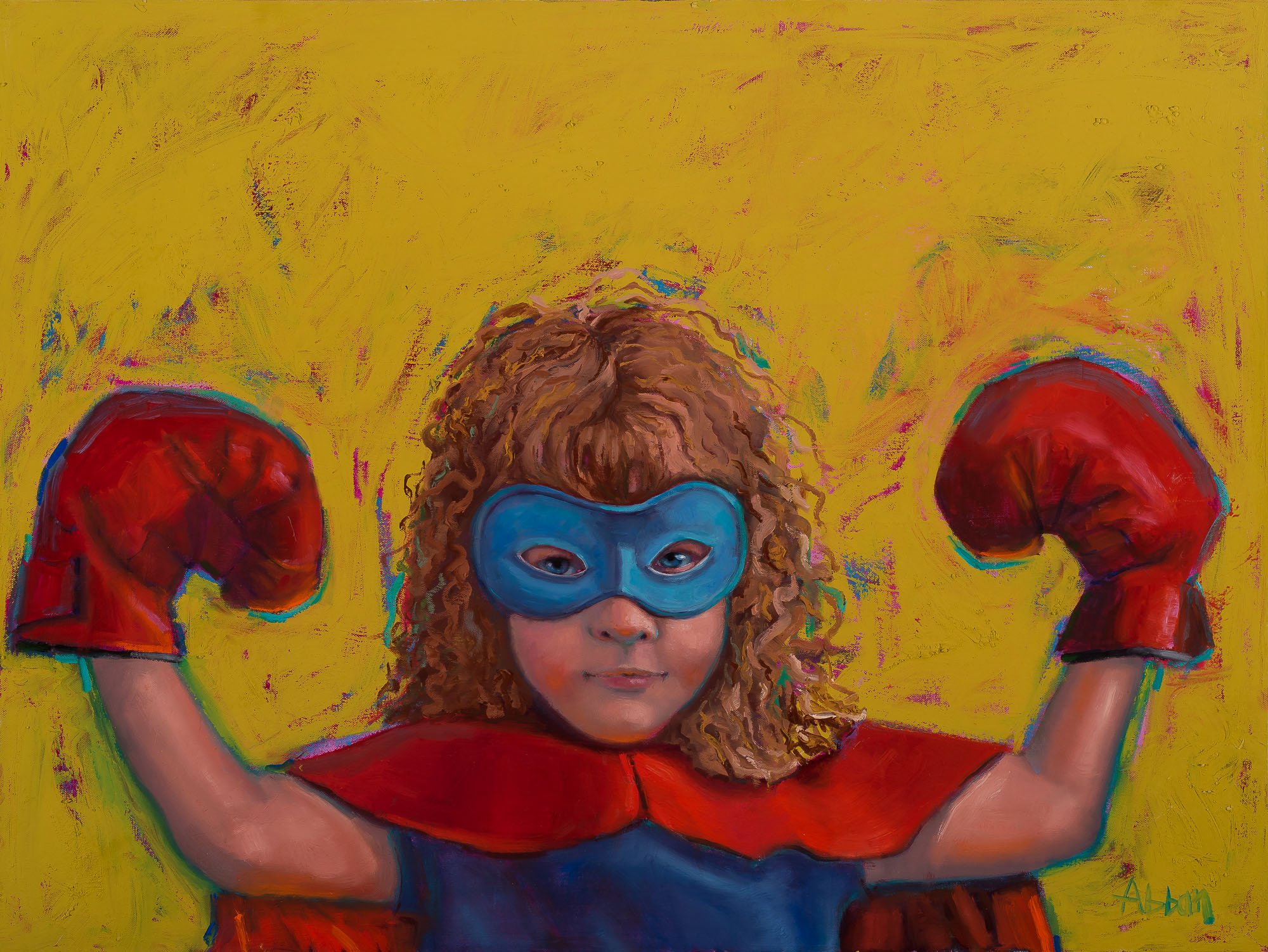Interview
Jane Grant-Abban
Jane’s works is about re-awakening, refreshing and restoring the child within through expressive portrait painting, transformational art experience and books. Her painting explores the intersection of life, emotion and childhood to create unique, captivating and timeless paintings. Using oil and mixed media, she strives to communicate the beauty of life’s complexities through her work. Jane is inspired by everyday moments, stories and memories that make life extraordinary. Her paintings are a way of expressing the joy, sadness and complexity of life. She looks to capture the beauty of the nuances of life and to create art that evokes emotion and captures the imagination. Through her artwork, she hopes to create an emotional connection between the viewer and the painting, and for it to serve as a reminder to cherish each moment of life, no matter how small or fleeting. She creates portraits that capture moments in time and portray not just the physical appearance of a person, but the essence or 'spirit' of who they are. In a finished painting you will find both realistic and abstract elements as she seeks to reconnect herself and the viewer with the child within.
What is your background and how did you start your journey in the art world?
“My journey from enjoying art and ‘being creative’ to living as a professional artist started when my husband and I moved with our two children from Wales to Minnesota in 2006. It was such an obvious season change in life, that it threw everything up in the air and allowed me to have a fresh start. My husband reminded me that I had always wanted to do more painting, and he encouraged me to take the time to explore it. I found a master oil painter in our town, and began lessons with her. I was terrified, but I was also hooked right away! I knew that although I had loved being an elementary teacher in the U.K, I now wanted to pursue art as my career. That was the beginning of my adventure with art. Having been told that it takes ‘miles of canvas to make a painter’, I worked really hard and diligently to progress fast, and a year later I held my first solo show; a year after, that I opened an art academy for kids who were serious about art.”
What inspires you?
“The short answer is anything and everything! I have what is termed an aesthetic mindset, characterized by a high level of curiosity, love of playful exploration, heightened sensory awareness, and a drive to engage in creative activities. To a degree, I have always been like that, but it has definitely grown and intensified the longer I have been an artist. The world is full of inspiration and wonderful things right under our noses just waiting to be noticed! I particularly get inspired simply people watching. I am drawn to facial expressions and body postures, often taking photos of fleeting moments as people pass by, sit and drink coffee or go about their everyday life. That kind of observation sparks ideas for paintings I want to create. This is particularly true when I watch children and how they engage with the world around them. I don’t have to work at being inspired, or in any sense ‘pursue’ inspiration; I simply have to turn up to my everyday, ordinary life with curiosity and playfulness, and there it is! It’s as if Inspiration says, “Ah! There you are! I’ve been waiting for you. Shall we begin?””
What themes do you pursue? Is there an underlying message in your work?
“The theme for many years has been childhood- I don’t see that changing any time soon as it is an endless source of inspiration to paint from and explore. For many adults, that inner child may have gone unnoticed and unexpressed for many years. I want to re-awaken that child within because it is an essential part of experiencing healing, freedom and self-expression. I’m passionate about helping people experience inner healing and transformation through art and creative expression. There is an underlying message to my work. The child still within us gets smothered and buried beneath burdens and responsibilities, pain and disillusionment. We get so lost in life, but I believe we can find our way back. No matter how long she’s been neglected, that child within needs tending to, noticing and nurturing. We can remember who we really are- God’s beloved children. He can restore what has been lost or stolen. Our physical bodies are aging, but our youth can be restored; we can re-connect and re-awaken our truest identity as a child of God and live out of that place once again. It’s a place of belonging, identity, purity, innocence and freedom. I believe one significant way to do this is through the making and beholding of art, because art engages the part of the brain where emotions, attachment, intuition and spontaneity reside. That’s why, alongside my creating of art, I help others create art like children again, through a unique therapeutic art process called Art & Creativity for Healing. The message behind my paintings, books and teaching is to know and live as God’s beloved child.”
How would you describe your work?
“I’d describe my work, which would include my paintings, books and therapeutic art as honest, authentic, unpretentious, welcoming, inspiring and empowering. It is relatable to many ages of people, because either you are a child or you’ve been one! Childhood is something we all have in common. I would also describe my work as having the intention and capacity for healing, restoring and re-awakening. It is multi-dimensional in that I use painting, writing and teaching to achieve the underlying message of my work.”
Which artists influence you most?
“I learned oil painting with Minnesota artist Kami Mendlik. Although she is a landscape and still life painter, she is an excellent teacher so I was able to apply what she taught me to figurative painting, which was where my interest lay. She has become one of my closest friends, and so I have had the privilege of watching her dedication close-up. More distant influences are Norman Rockwell, Sorolla, Sergeant, Daniel Sprick and Jeremy Lipking.”
“Childhood is something we all have in common. I would also describe my work as having the intention and capacity for healing, restoring and re-awakening.”
What is your creative process like?
“My creative process is a mixture of careful planning and spontaneity. Each has its place and supports the other. I stay open and curious in whatever I am doing, expecting ideas to come to mind and taking note of them when they do. I may jot a new idea or collection theme down so I don’t forget it. Sometimes, I just let the idea percolate for days, weeks or even months, and if it stays present and keeps passing through my mind, I will usually pursue it. I have adopted this method because I have come to realize that I always have ideas coming to me, and I could easily get distracted and frazzled chasing all the ideas as they come . I am disciplined in my time management, blocking out which days will be studio days; unless I am sick or there’s an emergency, those days are non-negotiable. I help myself stay focused by getting in the studio, setting out my paints, putting music on and praying, regardless of whether I ‘feel inspired’ or not. I show up. I do the practical things that need doing before actually painting, and I turn my phone off! Then I just start. Once I begin putting paint on canvas, I move naturally from my logical brain to my creative brain, and the ‘feeling inspired’ part starts to happen; I am soon in a flow state and loose all track of time. By focusing and planning this way, I can get an awful lot of painting done in a studio day. Another part of my creative process is to plan ‘inspiration days’ on my calendar; I take myself off and do things that are restorative and inspiring to me. It may be visit the Minneapolis Institute of Art, a leisurely look around an art gallery, or a walk in nature. The important thing is I plan for it. I also try to keep learning and expanding my experience as part of my creative practice. I watch videos of other artists and take online courses when I can make the time. I’ll give something new a try, such as try a new color on my palette or try a new painting technique. I may not keep hold of these new things I try, but it keeps me open, fresh and learning.”
What is an artist’s role in society and how do you see that evolving?
“The world is extremely polarized right now; I am confident that the artist has a role in ministering healing, common ground and shared humanity. Art can touch a soul where words cannot. Art can express things that words alone cannot. Where there has been trauma, be it in a family or a community, such as we saw during the months that followed the death of George Floyd here in Minneapolis, art speaks loud and clear. Paintings sprung up on boarded shop windows and walls. Where there were no words to express the emotions felt, or where there were too many words used and more damage caused, artists spoke with freedom and clarity. I believe that if artists will not only create themselves, but also share the ‘how to’ of creating, then society can be influenced for good . Artists can help people process pain and trauma, see other cultures and ways of doing things through new eyes, and facilitate the coming together of diverse people. They can show through art, what we have in common. Artists can facilitate connection, helping individuals and the communities they are part of, be more vibrant, inclusive and resilient. The creating and beholding of art serves a a unifying force, a means of storytelling, reflection and healing. Artists who are generous with their creativity, can influence, inspire and help others in powerful, transformative ways. That is why I not only create art, but use art as a means to teach people how to access their visual language and the healing potential within.”
Have you had any noteworthy exhibitions you'd like to share?
“Several years ago, I undertook a commission for a charity working with teen orphans in Russia. I painted a series of images that are used in their therapy sessions and which hang and a permanent display in their central location in St. Petersburg. I traveled to Russia to see the work the charity was undertaking, meet people and get my initial inspiration before starting the paintings. To think that those paintings are helping people on the other side of the world is amazing. It speaks to the power of art to heal and the potential of artists to see their place in the world as more than one of creating art, but also as one of facilitating healing.”










